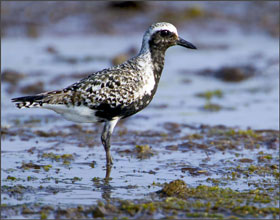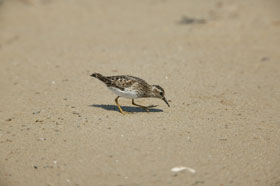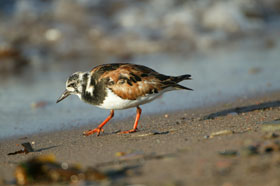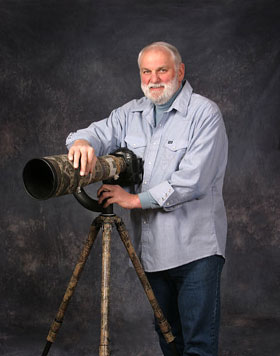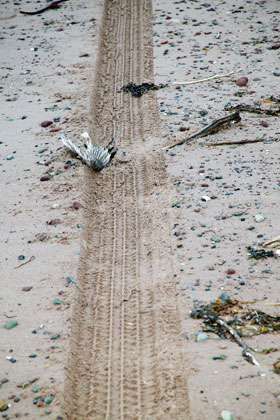
 |

|
 |

|
 |

|
 |

|
 |

|
 |

|
 
|
Articles
Mar 4, 2012
Category: Articles
Posted by: bob
Published Mascaret, Moncton, N.B.
There’s a jump to his step, a glint in his eye and a non-ending stream of superlatives coming from his heart. If it weren’t for the fact Pete Hicklin is vintage Acadian you might confuse the CWS (Canadian Wildlife Service) biologist with a leprechaun. The affable Hicklin introduced himself to me, on the “Perfect Day” in July 2000. I was standing on the edge of a bluff, overlooking the Grand Anse of Shepody Bay, and a little inlet known as Johnson’s Mills. I was intensely focused upon one of Mother Nature’s wonders, the synchronized “ballet-du-vol” of the semipalmated sandpipers. As a child and adolescent growing-up on Buck’s Flats I had witnessed the spectacle many times, but never before had the program come with play-by-play commentary. Hicklin, the veteran bird biologist, had slipped in behind me, looked over my shoulder, saw the images appearing on the digital LCD on the back of my 1DS and began whispering in my ear, “I’d like that one and that one and that one is nice too.” “I hope you got it?” he’d say with a hint of anticipation, “it’s the perfect day you know. I’ve never seen anything so beautiful in my twenty-five years of researching these birds, anywhere,” Hicklin added. “A photographer’s dream,” I added. The thing I liked most about Pete was his no pressure approach to getting what he wants. Pete is an enterprising unleashed atom. If he needs it he asks and if you “get it” he’ll teach you how to share it. I applaud this approach considering the unfortunate federal budget reductions being inflicted upon our conservation and wildlife services. I’ll address the federal budget cuts in environmental protection in a future column but today’s focus is preserving this once thriving species of sandpiper and their sub-species now in decline. Back in the mid and late fifties when my friends and I covered ourselves with the chocolate ooze of Bucks Flats in hopes of a sneak attack on a “peep” little did I know that the Dorchester Cape mud held the richest deposit of Corophium volutator (mud shrimp) in the world. The same little critters required by the “semis” to double their weight in preparation for their four day non-stop flight to their wintering grounds in South America. When a hungry Peregrine Falcon, the semi’s natural enemy, swooped in for a meal, our swarm of thousands vanished and the show came to an abrupt end……for the day, but not our conversations on the future of his precious semis. Hicklin and I have become good friends and comrades-in-arms since our first meeting that day on the bluff and he’s spent countless hours sharing stories, telling tales and providing insightful solutions to the problems being encountered by migrating shorebirds across our continent. Pete’s Master’s Degree from Acadia University has served him well but his twenty-five years of service to his country and research of our environment has served us best. “I saw my first flock of roosting Semipalmated Sandpipers in the Bay of Fundy on July 26, 1974 and from that day forward I was hooked,” said Hicklin. Hicklin points out that since that time negative changes have taken place that need addressing. “The Maritimes Shorebird Surveys, in place since 1974, indicate that declines which began decades ago are continuing: for example, counts in the 1990s were lower than those in both the 1980s and 1970s. Not only did a number of species show statistically significant declines, but the proportion with negative changes was significantly higher than those with positive values,” Hicklin mused. “Causes of declines in shorebird populations are difficult to pinpoint, if only because of the birds’ extensive migrations and their potential to be affected at many different stages of these annual migrations. Habitat loss, such as the infilling of wetlands in the 1960s and 1970s across North America and the conversion of natural grassland to agricultural land has been implicated in the declines of a number of temperate species. Furthermore, the impacts of climate change on the birds’ breeding habitats and, consequently, the production of fledglings, for a number of species remains unclear,” Hicklin continued. Hicklin was quick to point out problems with other speciae as well. “Since the 1970s, counts for adults of 6 species of shorebirds (Red Knot, Least Sandpiper, Short-billed Dowitcher, Semipalmated Sandpiper, Dunlin and Spotted Sandpiper) declined significantly. But overall, of 16 species censused on a regular basis, 13 showed negative population trends and only 3 showed positive values. The other species illustrating declining trends are: Black-bellied Plover, Ruddy Turnstone, American Golden Plover, Sanderling, Hudsonian Godwit, White-rumped Sandpiper and Pectoral Sandpiper. The three positive stories in Atlantic Canada are the Semipalmated Plover, Willet and Whimbrel, added Hicklin. So where do we go from here and how do we become pro-active members of the broader community called “the existence of future generations”? “Over the past several years, national shorebird conservation plans in both Canada and the U.S. have been developed, culminating in the publication of the Canadian Shorebird Conservation Plan and the U.S. Shorebird Conservation Plan. In Canada, regional shorebird conservation plans have also been developed in order to deliver on-the-ground shorebird conservation through partnerships between governments and non-government organizations. For example, over the last few years and in collaboration with the Canadian Wildlife Service, the efforts of Ducks Unlimited and The Nature Conservancy of Canada have resulted in securing important marshlands in the Maritimes and sandpiper roosting sites along the shores of the upper Bay of Fundy. These efforts will prove to be of great benefit to our migratory shorebirds over many years and generations, to come. “But there is still much to do” Hicklin concluded. Hicklin’s observations are critical components to a long range plan and goals intended to reverse the downward spiral of these beautiful creatures One way the everyday photographer can assist in the protection and development of protected areas is to take the time to capture the good, the bad and the ugly on film. Provide the data to authorities and media outlets that “care” and be sure you follow-up on their actions. Push for results that favor environmental protection and species preservation. Our efforts are not just about animals and animal welfare it’s about our survival as a human species-at-risk. The semis will return to Johnson’s Mills and Mary’s Point this month. They’ll feed and fatten-up until they leave around mid-August. The first to arrive will be the females, followed by the males and then the juveniles, born in the artic nesting grounds this summer. They’ll grow from 20 grams in weight to about 36-40 before heading south. You’re invited to share their special days, to enjoy their aerial acrobatics and to watch one of the marvels of nature as it unfolds before your eyes. Learn from the experts on site, confine yourself to the viewing areas, keep your pets off the beach, educate a friend and commit to solving the problems confronting the 13 species of declining shorebirds passing through New Brunswick each spring and summer. Maritimers are blessed with one of God’s great creations here in our midst. The burden and responsibility for the survival of semipalmated sandpipers lies with us. If we’re fortunate, life provides each of us with opportunities to share the wonders that abound around us. I was fortunate to share one of those days with one of God’s special people and a friend. Thanks to Pete Hicklin and his unselfish colleagues at Environment Canada and Canadian Wildlife Service we may have the opportunity to enjoy another “Perfect Day” soon! 
Mar 4, 2012
Category: Articles
Posted by: bob
Published Mascaret, Moncton, N.B.
At low tide the concrete blocks with rusting steel pipes protruding from their ends appear like sea anemones awaiting their prey. At low tide they can be easily avoided. But when the tide moves in and children find themselves at play along the shore danger lurks beneath the seductive sparkling surface. As a grandfather of five energetic and active children it bothers me to find these obstacles obstructing one of New Brunswick’s most pristine beach play-grounds. As a newly arrived home owner at the shore I enquired about the apparent WW II bunker remnants and their purpose. Local longtime residents suggested that years before they had been placed there to prevent beach erosion. The obvious question was by whom? It was suggested that in years gone by it was acceptable to dump the trash into an eroding area in an attempt to prevent it from being absorbed by the sea. Apparently, at the time of the misdeed, there were no laws prohibiting the practice. Being somewhat direct I approached the property owner and asked about the debris and its purpose. I was summarily told to get off “his” beach and to stay off his beach or suffer the consequences that a trespassing claim might bring. As an added insult to my injured persona I was told to keep my grandchildren off his property or they would be dealt with accordingly. This demand made of me by the cottage owner, Pierre Boudreau, came as a surprise. Not only was it not the Acadian hospitality I had been assured of in the region when I bought the home but it defied all principals of the law governing beach usage on New Brunswick’s beaches. Boudreau believed the sandy beach belonged to him. From his front door all the way to where, P.E.I. directly across Northumberland Strait before us? As a matter of fact property owners only own the land above the highest high tide line of the year. Everything below that watermark is public domain. The man obviously was preying on the apathy and ignorance of his neighbors. Boudreau’s bad attitude is not a trait of the peaceful Acadians I know. It is, in fact, the attitude of an old man obsessed with a need to own and control everyone and everything in his path. I was not dissuaded and carried my investigation further. The sewage pumping station, adjacent to the Boudreau cottage, and running overflow drains underground and into the sea next to the pile of debris, was built in 1971. According to municipal authorities Boudreau’s father had negotiated the contract with the Village of Shediac to allow them to access the property where the pumping was to be located. I began to wonder if anyone had obtained a variance to dump trash and concert blocks onto a public beach. If the debris is above the high-water mark it must belong to the owner. If the debris is below the high water mark it must belong to Environment New Brunswick or Environment Canada? Regardless of how it got there, someone needs to pay to have it removed. The Beaubassin Planning Commission pleaded not guilty to the folly. They stated that they had had nothing to do with the dumping and had never given permission to fill any beach area along this shore. I pressed manager Ron Boudreau, of the Shediac Sewage Commission to give me an answer. He finally proclaimed that a soon to be held meeting would resolve the problem. Unfortunately, two years later we are still awaiting the meeting. I think it’s time for property owners in conjunction with Environment New Brunswick, Environment Canada, and the Shediac Sewage Commission et al to remove the mess and return the beach to its original state. Why am I so adamant?
Boudreau became belligerent, aggressive and threatening when I approached him with the suggestion that he clean up the mess on his property. . It appears that the only resolution can be found in the courts. Responding pro-actively has always proved to be the prudent way to approach a problem. However, a lawsuit may be required to get the attention of Beaubassin Planning Commission, Shediac Sewage Commission and Beaudreau. Solving the problem now before someone is injured, and possibly seriously, is the right thing to do. The cost to all, if an injury occurs, may be to high a price to pay for everyone. Common sense should prevail, however, “common sense is not so common.” 
Mar 4, 2012
Category: Articles
Posted by: bob
Published Mascaret, Moncton, N.B. The legal hunting season is over but hunting is not. Whether you reside in Cape Tormentine, Coles Island or Haute Aboujagane, the probability exists that if you own a gun, a significant weapon, your cooler either is, or could be filled with venison, bear, and moose in the near future. 
Mar 4, 2012
Category: Articles
Posted by: bob
Mar 4, 2012
Category: Articles
Posted by: bob
Mar 4, 2012
Category: Articles
Posted by: bob
Mar 4, 2012
Category: Articles
Posted by: bob
Ken Dryden, Canada's Environment Prime Minister 2016? Is there a better prospect, as Canada's Prime Minister 2016, than Ken Dryden? Dryden, a candidate for the liberal party, was elected recently to the riding of York Centre, a suburb of Toronto. For those of you born after 1970 and who may (heaven forbid) not know of Canada's legacy as a world hockey power, Ken Dryden was an NHL All-Star goaltender with the Montreal Canadiens and Team Canada '79 of that era. To his credit, Dryden, while the professional athlete, was simultaneously obtaining his law degree from McGill University. For those of us who also played, coached and watched during that generation admitted that Dryden deserved the title as "the coolest man on ice". The pressure of playing in the world's greatest sports organization (Montreal Canadiens) and before the toughest fans in professional sports seemed to fuel the "fire in the belly" needed to be the best of the best in his field. As we spring forward to the present and look to the future we're obligated to ask, "Who in the liberal party was the genius behind the Dryden capture?â" Consider the potential the Dryden name brings to the table: He is respected and recognized across the western hemisphere by its powerful political players. His undergraduate degree in history from Cornell University, in upstate New York, was obtained at one of the great environmental universities in North America. What Anglophone could better reach and understand the challenges presented to us in Quebec? By its people, its culture and the disaster a break in the confederation link would mean to the dominion if it was allowed to be broken. Dryden's has potentially powerful allies in the Quebec effort, if he needed them, in his former teammate and Quebec power broker Serge Savard. Savard is one of the most successful businessmen in the province and a leader of the province's influential arts and culture community. Undoubtedly, there are other attributes this man among men will bring to the back bench in Ottawa, but how long will he be a "back-bencher"? He's never been a back-bencher in his life and don't expect him to be one in Ottawa. Don't blink! This cream will rise to the top faster than Jean Chrétie's memory forgets the definition of scandal. The questions about Dryden are obvious. Can Ken Dryden be his own man? Can he tackle the tough issues before Canada's future generations? Can he become a member of the liberal team or will he become the team's leader? Canada's future requires immediate and microscopic political attention. Years of inertia and double-speak are dooming us. Most of tomorrow's problems were there yesterday. Most of today's problems are the same ones presented to the electorate before the elections of years gone-by. Why are we still addressing the same issues again today? What is a politician anyway? A public servant or glorified member of the public dole? When was the last time your elected public servant served you? Or do you care? It begs the question, why do we continue to elect impotent and shameful politicians who do little, say much, and accomplish less? Our elected obvious leaders are under the influence! If we could only develop a believable truth test and administer it regularly we might be further ahead. Unfortunately public servants are marionettes of the puppeteers of power. These influence peddlers can buy anyone for a price. Say it won't be so, Ken! Wouldn't it be a joy to refer to a Canadian icon as our next environmental prime minister? Or, will we be obligated to heap him onto the same smoldering political compost heap in our legislative chambers at both the provincial and federal levels? Let me introduce you to a few "four" letter "ists" words that must be removed from our political vocabulary and suggest they be added to our everyday accomplishment: Environmentalists, conversationalists, naturalists, activists, ecologists, and more. So, Mr. Dryden, are you prepared to meet the challenge before our children and grandchildren's generations? Let's start right here in New Brunswick. Why is your party encouraging the importation of toxic waste from the United States to the pristine area of the province called Belledune? To be incinerated? And where will the fallout fall? Are the people and eco-sensitive marshes and waters, wildlife and fish of the Acadian Peninsula expendable? How about he the Pedicodiac? Is the Riverview causeway/dam so vitally important to the selfish needs of the influence peddling residents of Lake Pedicodiac that its impact could be causing an international wildlife crisis? The dumping of Lake Pedecodiac waste into the Grande Anse of Shepody Bay may be destroying the sensitive feeding grounds of hundreds of thousands of migrating shorebirds. What about applying existing environmental restrictive regulations to former political hacks who want to destroy a sensitive marsh and replace it with a tourist development plot in Cap Brule? There's plenty more, Ken! Plenty more! When are we going to find a leader with enough intestinal fortitude to refill the depleting coffers of Environment Canada – and especially the wildlife research and protection areas instead of allowing them to shrink to extinction levels? When can we count on you to step in and reverse the devastation being caused to our fishing industry, its people and the industries that matter so much to us here? Obviously, your colleagues in the party from our local ridings aren't capable of accomplishing a thing in that regard. And, apparently they don't want to either. You made a choice, Ken. You have turned down your political sheets and you‘re about to climb into bed with ?. It won’t take us long to see who you choose as bed mates. Hopefully, your choice will be for life. To-date, the choices of other recent prime ministers have been the choices of death. To continue down that path only assures our grandchildren of no hope for a future. Your leadership on the ice as a sports icon and soft spoken demeanor off the ice is now center stage. Can you star again? Or, will you be a tarnished memory in the history books of time? The lineup is set, Ken, the metaphorical puck has been dropped, and this former pro hockey player and member of the same great traditional hockey family would like to literally walk you through each point of concern and introduce you to the real people these uncontested issues will and are affecting. Before you decide on your bed fellows, Ken, give me a call (506-532-2121). Let's go dutch-treat so no one can ever say that an eco-activist was guilty of paying for something so obvious or being called an influence peddler. "Shooting memories and preserving life" is my mantra, and I'd like to keep shooting, but the days remaining are growing shorter and shorter. Best wishes, Mr. Dryden, and God's blessings on your newest and most promising high profile public servant role. 
Mar 4, 2012
Category: Articles
Posted by: bob
Huck Finn and I shared the same dreams. Huck realized his in and around Hannibal, Missouri, I realized mine and grew into manhood in Dorchester, New Brunswick, Canada; Buck’s Flats, Johnson’s Mills, the Cherry Burton Road, the flat iron and the town square were playgrounds, and nature and her creatures my playmates. The responsibilities of adulthood, parenting, meeting career goals and surviving life in the fast lane temporarily interrupted my relationship with Mother Nature.
Visits to local zoos, an occasional stroll down a paved big city bike path, or arguing over sun bathing rights on an overpopulated freshwater beach didn’t fill nature’s call. The Maritimes, my home, was beckoning and I needed to return where breathing deeply was healthy, drinking from a babbling brook was a way of life and PCB, in the swimming hole, stood for pretty cute blonde, not some cancer causing chemical.
Home was a place where we ate shad, tuna, haddock and halibut and my day at the beach was shared with feisty sea gulls, not thousands of human ants.
As retirement beckoned, I enthusiastically packed my camera gear and headed for an extended stay in the woods, along the beaches and in the salt marshes of the Tantramar and Beaubassin eco-systems of Fundy’s tidal shore. The scent of the sea was magnetic. My anticipation mounted, as I navigated each bend in the road that brought me closer and closer to l’Acadie and the Acadian paradise I had left years before.
My naiveté and belief that time had stood still quickly faded as I ran the gauntlet between Riviere du Loup and Edmunston where even money says you will hit a moose as you drive through the forested gauntlet. The revitalized Trans Canada Highway was leading me into paradise lost and not the Shangri-La of my youth. What had happened to the home I once knew”? Pulp plants along the St. John River had poisoned this magnificent estuary. The Miramichi was no longer the pride of salmon rivers, the Restigouche and Madapedia rivers are fading memories of great salmon and trout runs and the tidal bore needs a push to make it up the dammed Petitcodiac. Voracious clear-cutters had systematically violated every virgin timber stand in the province; foreign interests are making it worthwhile to deplete our fishing resources. Greed has dried up our cod. The once plentiful shad no longer populate the Bay of Fundy. There is a moratorium on Halibut fishing and our haddock stocks are waning. Our beloved lobster is threatened. Contaminated shell fish warnings dominate our sea coasts and most of our oysters have a government mandated thirty day de-contamination “clean-up” process they must meet before they are deemed eatable. We sell our mercury laced tuna to the Japanese and Americans, only to buy back the polluted behemoths in a processed form, in neatly wrapped lunch packs we feed to our school age children.
We have mastered the art of “roe-ing” the very future out of our herring schools. We squeeze their eggs into instant-freeze packs and send them of to the lucrative Asian market. However, as conscious stewards of our fishing resources, we quietly smoke and salt their shriveled lifeless remains and send them off to Haiti and the Dominican Republic, making us good stewards of a dying industry. What cannot be smoked, we sell to fish-processors who give us back fertilizer for our gardens. We allow local and provincial governments to indiscriminately develop our coastlines while destroying their sensitive eco-systems, as we systematically dismantle funding resources for important environmental protection programs. Why does it appear that Mother Nature finds herself in a constant battle with local politicians? Why is it that only a few of us are willing to reach out and take her by the hand and extricate her from the brink of ecological annihilation?
When I committed to conservation through photo-journalism eight years ago, I left behind a twenty-three career in professional sports and twelve years as a political activist in the United States. Apparently, my dream of becoming a retired, laid-back easy-going photographer is rapidly coming to a close. I had expected to create a homestead on the shores of Northumberland Strait at Cap Brule for my grandchildren with the hope that they would experience the same joys there that I had in Dorchester. Unfortunately, that may not happen if I do not get involved in the conservation and preservation challenges we are faced with here at home. When I returned to the shores of Shepody Bay, my childhood playground, six summers ago, I cringed. The magnificent aerial displays of the million or so migrating semipalmated sandpipers that congregate there every from mid-July through August were gone. That number had dwindled to a quarter-million. However, on the bluff overlooking Johnson’s Mills I had a providential and enlightening encounter with a diminutive leprechaun, from the offices of Environment Canada’s Wildlife Services bureau in Sackville. Peter Hicklin was conducting his annual semipalmated sandpiper research along the shores of Buck’s Flats and the beaches I had patrolled as a boy. Being the opportunist I am, I moved alongside Hicklin and began listening for his impromptu comments….“I like that one,” he’d utter, to no one in particular. I quickly realized that “I like that one,” was a Hicklinism that meant take a picture, you fool! The aerial acrobatics provided by these feathered wonders was nothing less than special. To quote Hicklin, a veteran of twenty-five years of researching these birds, “This is the perfect day!” Hicklin and I have spent countless hours discussing the future of shorebirds migrating through Atlantic Canada, and the stories are almost always the same….we, the private sector, must extend our helping hands to Mother Nature before it is too late! The building of the causeway/dam in Riverview has deprived the regions around Dorchester Cape, Buck’s Flats, Johnson’s Mills, Daniel Flats and Mary’s Point of the abundant food reserves it has supplied millions of migrating semipalmated sandpipers in the past. Instead of a rich fertile feeding ground for migrating shorebirds the region is becoming a vast burial ground for the lipid rich Corophium (shrimp like invertebrates) living there in the chocolate colored sub-straits. Since the process of flushing the lake behind the dam began, worthless silt has accumulated on the feeding grounds denying the birds access to the reserves needed to affect their lengthy 4,000 km, non-stop flight to their South American wintering grounds. In 1950, as a boy of 14, I watched a million “peeps” swarm over the bay in their patented wing-tip to wing-tip acrobatic flight. By 2004 only 75,000 were on hand to carry-on the show. Sad! Sadder still is the knowledge that although New Brunswick hosts thirty-five species of migrating shorebirds on their way to and from their Artic breeding grounds each year their numbers are dropping precipitously. Of the thirty-five species re-fueling on our shores, twenty-eight are in decline, thirteen are in significant decline and three are on the “species-at-risk” list. A recent scientific study reveled that the once abundant Red Knot will be EXTINCT by the year 2010. The Red Knot has become a victim of uncontrolled over harvesting of the horseshoe crab in the Delaware Bay, off Cape May, New Jersey.
Over time I hope you enjoy our walk through nature and the insights I have to offer. My wish is for you and me to work together to effect an integral change in how we go about conserving and preserving our environments for future generations. The subject matter available is unlimited. I look forward to drawing you out of your comfort zone with thought provoking insights that will require you to act. No fence sitters allowed. I invite you to walk with me through the devastated wastelands left by clear-cutters acting with impunity or serious government oversight. Let me introduce you to the splendor of my new found paradise I call the Acadian Peninsula or the magnificence of the 36-foot high tides of the Bay of Fundy.
However, there is a dark side and you’ll need to see it for yourself. I’ll ask you to join me in making a difference there and in your own “backyard.” I’ll show you how bureaucrats are not good for the environment, why enforcement of environmental and wildlife protection laws is virtually impossible within the labyrinth of red tape. I’ll take you inside the local lobster industry and explain why it is in dire straits.
I am reminded of the days when coal miners, deep in the mine, hung a canary in a cage. As long as the canary sang, all was well. The moment the singing stopped or the bird died, everyone bailed out… they were next to go. Welcome to my world! The “fat-lady” my still be singing…but the environmental canary maybe wailing its final song? Let’s make a difference! 
Mar 4, 2012
Category: Articles
Posted by: bob
New Brunswick is home to a small population of sparrow sized migratory shorebirds known as Piping Plovers. These annual visitors to the Acadian Peninsula region of Northern New Brunswick are considered, “Species-at-Risk.” In other words, they are on the verge of extinction. However, we the people, naturalists, environmentalists, tourists and local nature lovers, have within us the ability to STOP this precipitous decline if we choose to respond to their call. I have patrolled these sensitive nesting areas for the past eight years and have enjoyed an intimate relationship with the birds and the beauty of their nesting habitat. Unfortunately, these sand and pebble colored residents of the beaches are so well camouflaged it works against them, especially when 4 x 4 vehicles or itinerant ATV riders roll over the nests and chicks who are comingled with the rocky seashore they choose as their temporary home. The approximate global population of Piping Plovers consists of some 6,000 adults, of which approximately 2,000 are found along the coastline of Atlantic Canada. Beginning in April, the Piping Plover arrives in New Brunswick from its southerly wintering grounds--Florida, North Carolina and the Bahamas. They search for suitable nesting beaches that provide food, security and protection for their brood of chicks. The prognosis for this species at risk may be improving. Studies and research conducted by the federal government (Environment Canada – Canadian Wildlife Service; Canadian Heritage – Parks Canada); provincial Department of Natural Resources and Energy; and non-government organizations such as the Piping Plover Project of the New Brunswick Federation of Naturalists and the Irving Eco-Centre – La Dune de Bouctouche—have begun to show a few positive signs. But how do you define HOPE? Is it governmental concern for the survival of the species? Is it finding adequate funding for more research and protection programs, encouraging volunteer groups to do the work the Federal and Provincial Governments cannot or will not, or, as some feel, all of the above? Instead, HOPE can only be defined as a concerted effort by concerned citizens to step-up and do what we can with or without the cooperation of faceless bureaucrats in the nation’s capitol. Legislative leaders and bureaucrats are so self absorbed with their own importance and survival that they have no clue of the world around them. As concerned citizens, can we wait for ineffective policies and unfunded programs to respond to matters of urgency? The simple answer is NO! Government employees walk on egg shells when asked to help privately initiated programs. The standard bureaucratic response is “Please don’t make waves!” Job security comes first for a bureaucrat, and ruffled political feathers can make life in the bureaucracy a hell-hole for anyone who attempts to tell our public servants what is needed. So while bureaucrats kowtow to ineffective politicians, hope for the future of the Piping Plover dangles in the balance. Why is the Piping Plover endangered? The three main threats to the Piping Plover’s survival are: (1) habitat loss or degradation; (2) predation; and (3) human disturbance. Habitat loss Piping Plover nests and their off-spring have become victims of unpatrolled nesting beaches by uneducated users of vehicles, tourist foot traffic and unleashed dogs. The quantity and quality of habitat available for nesting Piping Plovers has also decreased because of beach destabilization that has resulted from draining wetlands for subdivision and cottage development, public beach sites and other community park development programs. These disturbances physically alter the characteristics of the land adjacent to these sensitive beaches and make them unsuitable for nesting. Beaches also become unsuitable from natural causes such as vegetation encroachment or erosion caused by ice scour and storms. These natural habitat losses normally would force Piping Plovers to relocate to new beach areas; however, with an increasing amount of coastal development, few habitats exist that allow plovers the option of finding suitable alternative nesting sites. As a result, Piping Plovers are often forced to nest in areas of sub-optimal habitat. The number of young produced in sub-optimal habitat is usually lower. The obvious question is “does commercial expansion trump protecting of a wildlife species? The answer is not necessarily yes. Predation The eggs and young of Piping Plovers are vulnerable to several predators commonly found in these areas. The main predators of Piping Plover are crows, foxes and gulls, but raccoons, weasels, mink, owls, small birds of prey and even domestic and feral dogs and cats may kill adult birds and chicks or destroy eggs. Agricultural and housing developments near nesting beaches can attract predator populations and increase the risk of nesting failure. Beaches with ineffective or insufficient litter management also tend to maintain unusually high predator populations and can lead to lower survival rates for young birds. Human disturbance Increased beach visitation by people, and unrestricted or supervised recreational vehicle use on beaches, poses a considerable threat to critical nesting habitat throughout the nesting area. New recreational equipment including all-terrain vehicles, personal watercraft, wind surfers and kayakers make it possible for humans to access areas that were once difficult to reach. Therefore, many formerly isolated nesting areas now receive an increasing amount of human traffic. Off-road vehicles are especially problematic. Vehicles may crush eggs since the nests are well hidden in the sand and resemble small round pebbles. Vehicles create ruts in soft beach sand that make movement for small chicks difficult and, if sufficiently deep, may actually trap chicks so they cannot escape. Vehicles imbed seaweed in the sand so developing plovers cannot access their food often located there. Studies have demonstrated that fewer chicks survive on beaches with heavy human disturbance. When Piping Plovers are disturbed, they spend a great deal of time and energy in trying to distract potential predators or in some other way of trying to protect their chicks. On very cool and very hot days, young plovers must be sheltered by the adults since downy chicks are unable to regulate their own body heat effectively. Since chicks must grow very rapidly in order to be able to fly within 25 days after they hatch, the chicks must spend their time continually feeding during favorable weather conditions in order to gain the necessary body weight. Research indicates that chicks that are unable to achieve a critical body weight by ten days of age do not survive. What can you do to help?
Make a difference:

Mar 4, 2012
Category: Articles
Posted by: bob
The affable Hicklin introduced himself to me, on the “Perfect Day” in July 2000. I was standing on the edge of a bluff, overlooking the Grand Anse of Shepody Bay, and a little inlet known as Johnson’s Mills. I was intensely focused upon one of Mother Nature’s wonders, the synchronized “ballet-du-vol” of the semipalmated sandpipers.
As a child and adolescent growing-up on Buck’s Flats I had witnessed the spectacle many times, but never before had the program come with play-by-play commentary. Hicklin, the veteran bird biologist, had slipped in behind me, looked over my shoulder, saw the images appearing on the digital LCD on the back of my anon 1DS and began whispering in my ear, “I’d like that one and that one and that one is nice too.” “I hope you got it?” he’d say with a hint of anticipation, “it’s the perfect day you know. I’ve never seen anything so beautiful in my twenty-five years of researching these birds, anywhere,” Hicklin added. “A photographer’s dream,” I added.
The thing I liked most about Pete was his no pressure approach to getting what he wants. Pete is an enterprising unleashed atom. If he needs it he asks and if you “get it” he’ll teach you how to share it. I applaud this approach considering the unfortunate federal budget reductions that has hampered the critical work of wildlife and conservation research scientists across North America for years.
I’ll address federal budget cuts in environmental protection in a future column but today’s focus is preserving this once thriving species of sandpiper and their sub-species now in decline. Back in the mid and late fifties when my friends and I covered ourselves with the chocolate ooze of Bucks Flats in hopes of a sneak attack on a “peep” little did I know that the Dorchester Cape mud held the richest deposit of Corophium volutator (mud shrimp) in the world. The same little critters required by the “semis” to double their weight in preparation for their four day non-stop flight to their wintering grounds in South America.
When a hungry Peregrine Falcon, the semi’s natural enemy, swooped in for a meal, our swarm of thousands vanished and the show came to an abrupt end……for the day, but not our conversations on the future of his precious semis. Hicklin and I have become good friends and comrades-in-arms since our first meeting that day on the bluff and he’s spent countless hours sharing stories, telling tales and providing insightful solutions to the problems being encountered by migrating shorebirds across our continent.
Pete’s Master’s Degree from Acadia University, Wolfville, Nova Scotia, Canada has served him well but his thirty-two years of service to his country and research of our environment has served us best. “I saw my first flock of roosting Semipalmated Sandpipers in the Bay of Fundy on July 26, 1974 and from that day forward I was hooked,” said Hicklin. Hicklin points out that since that time negative changes have taken place that need addressing. “The Maritimes Shorebird Surveys, in place since 1974, indicate that declines which began decades ago are continuing: for example, counts in the 1990s were lower than those in both the 1980s and 1970s. Not only did a number of species show statistically significant declines, but the proportion with negative changes was significantly higher than those with positive values,” Hicklin mused.
“Causes of declines in shorebird populations are difficult to pinpoint, if only because of the birds’ extensive migrations and their potential to be affected at many different stages of these annual migrations. Habitat loss, such as the infilling of wetlands in the 1960s and 1970s across North America and the conversion of natural grassland to agricultural land has been implicated in the declines of a number of temperate species. However, the impact of climate change on the birds’ breeding habitats and, consequently, the production of fledglings, for a number of species remain unclear,” Hicklin continued. Hicklin was quick to point out problems with other species as well. “Since the 1970s, counts for adults of 6 species of shorebirds (Red Knot, Least Sandpiper, Short-billed Dowitcher, Semipalmated Sandpiper, Dunlin and Spotted Sandpiper) declined significantly. But overall, of 16 species censused on a regular basis, 13 showed negative population trends and only 3 showed positive values. The other species illustrating declining trends are: Black-bellied Plover, Ruddy Turnstone, American Golden Plover, Sanderling, Hudsonian Godwit, White-rumped Sandpiper and Pectoral Sandpiper. The three positive stories in Atlantic Canada are the Semipalmated Plover, Willet and Whimbrel, added Hicklin.
So where do we go from here and how do we become pro-active members of the broader community called “the protectors of future generations of migrating shorebirds”?
“Over the past several years, national shorebird conservation plans in both Canada and the U.S. have been developed; The Canadian Shorebird Conservation Plan and the U.S. Shorebird Conservation Plan. In Canada, regional shorebird conservation plans have also been developed in order to deliver on-the-ground shorebird conservation programs through partnerships between governments and non-government organizations. For example, over the last few years and in collaboration with the Canadian Wildlife Service, the efforts of Ducks Unlimited and The Nature Conservancy of Canada have resulted in securing important marshlands in the Maritimes and sandpiper roosting sites along the shores of the upper Bay of Fundy. These efforts will prove to be of great benefit to our migratory shorebirds over many years and generations, to come” stated Hicklin. “But there is still much to do!” Hicklin concluded. Hicklin’s observations are critical components to a long range plan and goals intended to reverse the downward spiral of these beautiful creatures One way the everyday photographer can assist in the protection and development of protected areas is to take the time to capture the good, the bad and the ugly and make it available to others on the web or the appropriate government offices. Once submitted we need to push for results that favor environmental protection, conservation of sensitive areas and species preservation.
Our efforts are not just about animals and animal welfare it’s about our survival as a human species-at-risk. The semis will return to Johnson’s Mills and Mary’s Point again next year they’ll feed and fatten-up until they leave around mid-August. The first to arrive will be the females, followed by the males and then the juveniles, born in the arctic nesting grounds in summer. They’ll grow from 20 grams in weight to about 36-40 before heading south. You’re invited to share these special days, to enjoy their aerial acrobatics and to watch one of the marvels of nature as it unfolds before your eyes. Learn from the experts on site, confine yourself to the viewing areas, keep your pets off the beach, educate a friend and make a commitment to solving the problems confronting the 13 species of declining shorebirds passing through the Atlantic flyway each spring and summer. Maritimers are blessed with one of God’s great creations. The burden and responsibility for the survival of semipalmated sandpipers lies with us.
If we’re fortunate, life provides each of us opportunities to share the wonders that abound around us. I was fortunate to share one of those days with one of God’s special people and a friend. Thanks to Pete Hicklin and his unselfish colleagues at Environment Canada and Canadian Wildlife Service we may have the opportunity to enjoy another “Perfect Day” soon! Pete is finishing his reports and writing his papers based upon his years of research and should have them completed within a year. After thirty-two years of dedicated service Pete has retired from service with the Canadian Government while he completes his passionate effort to tell us all of the wonders of these magnificent little creatures. Once completed we’ll have the opportunity oif sharing his words of wisdom and guidance to us for the future preservation of not only Semipalmated sandpipers but all migrating shorebirds along the eastern coastline of North America. Thanks Pete for all you have done! Especially being the Perfect Mentor. 
Mar 4, 2012
Category: Articles
Posted by: bob

Mar 4, 2012
Category: Articles
Posted by: bob
"The Meaning Of the Bull's Eye" is intended to get all lovers of wildlife and hunters closer together in the control and harvesting of wildlife. The points advanced in this article are fair and just for both sides; animal and human. Comments are welcomed!"
[More]
Feb 9, 2012
Category: Articles
Posted by: admin
Marcel Belliveau holds a special place in my heart. He was not only a hero, he was a fighter who overcame obstacles on the ice surface as a member of the vaunted Montreal Canadiens of 1914-15. In the fall of 2009 he was honored by the Montreal Canadiens when his name was included on the plaque in the Molson Center, home of the Canadiens, in Montreal, of the players who played for the greatest sports organization in the past 100 years. However, my grandfather was was more than an Acadian hero, he was a patriot who fought for his country and paid the price for our freedoms. I dedicate this story to all veterans and the bravery and valor they gave in defense of our values. Thanks, Grampy!
[More]
Category: Articles
Posted by: bob
Published Mascaret, Moncton, N.B. 
Category: Articles
Posted by: bob
Published Mascaret, Moncton, N.B. 
Category: Articles
Posted by: bob
Published in Come on In!, Moncton, N.B.

Category: Articles
Posted by: bob
Marcel Belliveau holds a special place in my heart. He was not only a hero, he was a fighter who overcame obstacles on the ice surface as a member of the vaunted Montreal Canadiens of 1914-15. In the fall of 2009 he was honored by the Montreal Canadiens when his name was included on the plaque in the Molson Center, home of the Canadiens, in Montreal, of the players who played for the greatest sports organization in the past 100 years. However, my grandfather was was more than an Acadian hero, he was a patriot who fought for his country and paid the price for our freedoms. I dedicate this story to all veterans and the bravery and valor they gave in defense of our values. Thanks, Grampy!
|



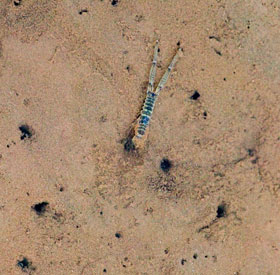
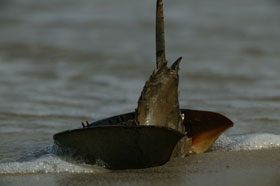
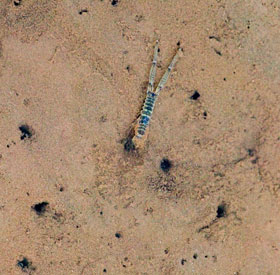
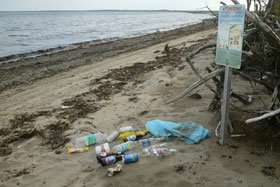
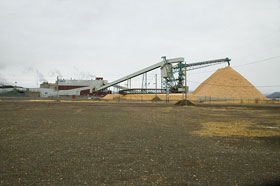
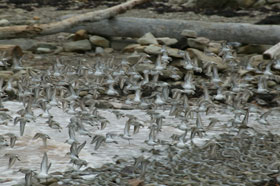

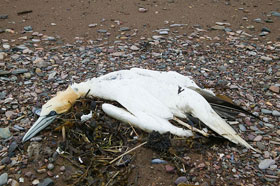
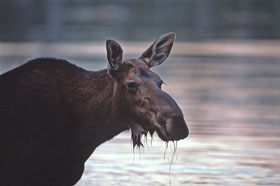
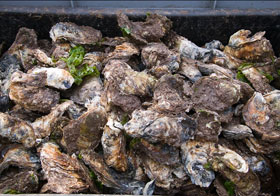
 There’s a jump to his step, a glint in his eye and a non-ending stream of superlatives coming from his heart. If it weren’t for the fact Pete Hicklin is vintage Acadian
There’s a jump to his step, a glint in his eye and a non-ending stream of superlatives coming from his heart. If it weren’t for the fact Pete Hicklin is vintage Acadian 
